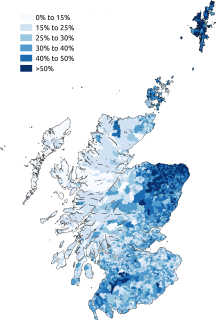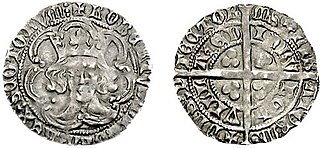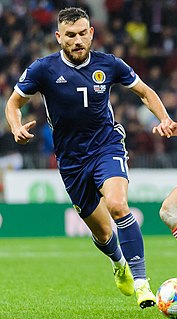| |||||
| Centuries: | |||||
|---|---|---|---|---|---|
| Decades: | |||||
| See also: | List of years in Scotland Timeline of Scottish history 1309 in: England • Elsewhere | ||||
Events from the year 1309 in the Kingdom of Scotland .
| |||||
| Centuries: | |||||
|---|---|---|---|---|---|
| Decades: | |||||
| See also: | List of years in Scotland Timeline of Scottish history 1309 in: England • Elsewhere | ||||
Events from the year 1309 in the Kingdom of Scotland .

Aberdeen is a city in North East Scotland. It is the third most populous city in Scotland, one of Scotland's 32 local government council areas and the United Kingdom's 39th most populous built-up area, with an official 2018 population estimate of 200,680 for the city of Aberdeen and 227,560 for the local council area.

Edinburgh is the capital city of Scotland and one of its 32 council areas. Historically part of the county of Midlothian, it is located in Lothian on the southern shore of the Firth of Forth. Edinburgh is Scotland's second-most populous city and the seventh-most populous city in the United Kingdom.

Robert Louis Stevenson was a Scottish novelist, essayist, poet and travel writer. He is best known for works such as Treasure Island, Strange Case of Dr Jekyll and Mr Hyde, Kidnapped and A Child's Garden of Verses.

Robert I, popularly known as Robert the Bruce, was King of Scots from 1306 to his death in 1329. Robert was one of the most famous warriors of his generation and eventually led the Kingdom of Scotland during the First War of Scottish Independence against England. He fought successfully during his reign to regain Scotland's place as an independent country and is now revered in Scotland as a national hero.

Scotland is a country that is part of the United Kingdom. Covering the northern third of the island of Great Britain, mainland Scotland has a 96-mile (154 km) border with England to the southeast and is otherwise surrounded by the Atlantic Ocean to the north and west, the North Sea to the northeast and the Irish Sea to the south. The country also contains more than 790 islands, principally in the archipelagos of the Hebrides and the Northern Isles. Most of the population, including the capital Edinburgh, is concentrated in the Central Belt – the plain between the Scottish Highlands and the Southern Uplands – in the Scottish Lowlands.

Sir William Wallace was a Scottish knight who became one of the main leaders during the First War of Scottish Independence.

The Wars of Scottish Independence were a series of military campaigns fought between the Kingdom of Scotland and the Kingdom of England in the late 13th and early 14th centuries.

The Battle of Bannockburn on 23 and 24 June 1314 was a victory of the army of King of Scots Robert the Bruce over the army of King Edward II of England in the First War of Scottish Independence. Although it did not bring an end to the war, as victory would only be secured 14 years later, Bannockburn is still a major landmark in Scottish history.

Scots is a West Germanic language variety spoken in Scotland and parts of Ulster in the north of Ireland. It is sometimes called Lowland Scots or Broad Scots to distinguish it from Scottish Gaelic, the Goidelic Celtic language that was historically restricted to most of the Highlands, the Hebrides and Galloway after the 16th century. Modern Scots is a sister language of Modern English, as the two diverged independently from the same source: Early Middle English (1150–1300).

Robert II was King of Scots from 1371 to his death in 1390. He was the first monarch of the House of Stewart as the son of Walter Stewart, 6th High Steward of Scotland, and of Marjorie Bruce, daughter of the Scottish king Robert the Bruce by his first wife Isabella of Mar.

Robert III, born John Stewart, was King of Scots from 1390 to his death. He was known primarily as the Earl of Carrick before ascending the throne aged around 53 years. He was the eldest son of Robert II and Elizabeth Mure and was legitimised with the marriage of his parents in 1347.

Duke of Rothesay is a dynastic title of the heir apparent to the British throne, currently Prince Charles. Charles' wife Camilla, Duchess of Cornwall, is the current Duchess of Rothesay. Duke of Rothesay was a title of the heir apparent to the throne of the Kingdom of Scotland before 1707, of the Kingdom of Great Britain from 1707 to 1801, and now of the United Kingdom of Great Britain and Northern Ireland. It is the title mandated for use by the heir apparent when in Scotland, in preference to the titles Duke of Cornwall and Prince of Wales, which are used in the rest of the United Kingdom and overseas. The Duke of Rothesay also holds other Scottish titles, including those of Earl of Carrick, Baron of Renfrew, Lord of the Isles, and Prince and Great Steward of Scotland. The title is named after Rothesay on the Isle of Bute, Argyll and Bute, but is not associated with any legal entity or landed property, unlike the Duchy of Cornwall.

The House of Stuart, originally Stewart, was a royal house of Scotland, England, Ireland and later Great Britain. The family name comes from the office of High Steward of Scotland, which had been held by the family progenitor Walter fitz Alan. The name Stewart and variations had become established as a family name by the time of his grandson Walter Stewart. The first monarch of the Stewart line was Robert II, whose male-line descendants were kings and queens in Scotland from 1371, and of England and Great Britain from 1603, until 1714. Mary, Queen of Scots, was brought up in France where she adopted the French spelling of the name Stuart.

"Auld Lang Syne" is a popular song, particularly in the English-speaking world. Traditionally it is sung to bid farewell to the old year at the stroke of midnight on New Year's Eve. By extension, it is also often heard at funerals, graduations, and as a farewell or ending to other occasions; for instance many branches of the Scouting movement use it to close jamborees and other functions.

Clan Bruce is a Lowlands Scottish clan. It was a Royal House in the 14th century, producing two kings of Scotland, and a disputed High King of Ireland, Edward Bruce.

Robert Snodgrass is a Scottish professional footballer who plays as a winger for EFL Championship club West Bromwich Albion.

Robert Burns, also known familiarly as Rabbie Burns, the NationalBard, Bard of Ayrshire, the Ploughman Poet and various other names and epithets, was a Scottish poet and lyricist. He is widely regarded as the national poet of Scotland and is celebrated worldwide. He is the best known of the poets who have written in the Scots language, although much of his writing is in a "light Scots dialect" of English, accessible to an audience beyond Scotland. He also wrote in standard English, and in these writings his political or civil commentary is often at its bluntest.

Covenanters were members of a 17th-century Scottish religious and political movement, who supported a Presbyterian Church of Scotland, and the primacy of its leaders in religious affairs. The name derived from Covenant, a biblical term for a bond or agreement with God.
Events from the year 1792 in Scotland.